#which is named after rudolf
Explore tagged Tumblr posts
Text
Todolf Modern Mafia au “Found”
Roger takes a vacation to Vienna. It ends .... poorly. Cut .... well most of the really bad stuff is off-screen, so to speak. But not all of it.
This is the finale of the modern mafia au.
The drawing is beautiful - a bird, blue and black. Roger can’t say he’s familiar with the blue bird-of-paradise, but the artist’s work is exquisite. Every moment he notices a new detail in the feathers.
“Sir?”
Roger turns to see the guide. He was alone for this tour - a virtue of the hour, for one.
“I need to take this call. Our resident artist is just up the stairs, so feel free to head up without me. He doesn’t bite.”
Roger nodded, thanking the guide before starting up the stairs. All of the birds were the work of ‘R.T.’ and he for one was quite eager to meet the skilled artist.
The door was partially open, revealing a studio with a single resident. He was trying to keep his footsteps light so as not to disturb the artist at his work.
Roger wasn’t sure what it was that gave it away. Rudolf’s hair was longer, and it had a soft wave to it, but there was something about him - the way he carried his shoulders, perhaps, that made him unmistakable.
--------------------
The surprised and tense shifting of the man’s feet reached Rudolf a moment before the word did.
“Rudolf.”
He would be lying if he said he had ever imagined this moment, imagined anything from his old life following him here. Carefully, he put his pen down, securing it away from the sketch before turning.
“Roger.” The man before him was older, but unmistakable.
“Rudolf, you’re-” Roger didn’t finish his sentence, instead taking a step forward and reaching his hand out before thinking better and pulling it back. “I thought you were-” A little smile comes to Roger’s face and there are the beginnings of tears pricking at his eyes.
A thousand thoughts flew through Rudolf’s head. A movement at the edge of his vision is surely Michael, but however competent the man is, he is only a man.
“You’re alive.” Roger does finally manage to finish his statement, his tone one of amazement, of joy.
“So it would seem.” Rudolf keeps his own voice even.
“Rudolf, why-” Roger still seems to barely believe his own eyes. “Why didn’t you come back? Come home?”
Rudolf doesn't answer that one. His home is with Tod, wherever that might be, and has been for well over a decade.
“Rudolf-” Roger took a step forward. “Oh God, he took you, didn’t he? Kidnapped you. Faked your death so we wouldn’t look.”
Rudolf gives a long blink and tilts his head to the side, raising an eyebrow. Obviously.
“Rudolf, I’ll take you home, get you out of here. You don’t have to be his prisoner.”
Rudolf held up his hands, making a show of the lack of manacles. “This is my home. And who said I was his prisoner?”
“Rudolf-” Roger’s tone shifted. He was starting to understand, then. “What did he do to you?” The man before him wiped what had to have been a tear away.
But Rudolf doesn’t have time to answer before Roger is speaking again, rapidly. Apologies are falling from his lips, and Rudolf lets them.
It continues for a few minutes, but Rudolf doesn’t begin to relax until he catches the movement in the corner of his eye once more. Michael had acquired backup. They drug and subdue Roger with relative ease, taking the man by complete surprise. Rudolf can see betrayal in his eyes for a moment before he passes out.
-------------------
Roger’s head hurts terribly when he comes around, his vision swimming for a few moments before it comes back fully into focus. He’s in an office, though calling it that is almost an insult to the term - the room is huge, with a vast window on one side. It was evening now - the sun was dinner, and he could see a great forest beyond the window. There’s a gag in his mouth and his hands are bound.
Rudolf was looking out of the window, or at least in that direction. He was looking slightly down, not at Tod, who was standing there, facing Rudolf side-on. Tod looked no different than Roger remembered, still almost ethereal. One of his hands was on Rudolf’s shoulder blade, and while he was facing Rudolf, Roger didn’t miss the flicker of Tod’s eyes in his direction or the way the man began to shift, moving around Rudolf until he stood before the young man. Tod’s arms went more completely around Rudolf, looking so gentle but holding him close.
It was so tender that Roger wanted to look away, but he couldn’t. The last he’d seen of them had been that horrific security clip, the one where Tod’s fingers had been digging into Rudolf’s neck, his murderous intentions all too clear. But now - this was anything but that.
Rudolf raised himself up on his toes, pressing a kiss to the corner of Tod’s lips, and Tod’s hand shifted to the middle of Rudolf’s back even as he began to lead Rudolf away, out of the office.
Tod returned alone, some minutes later. He leaned against the edge of the desk and made a gesture with his fingers. The two men who had been holding Roger the entire time hauled him much closer.
“Roger, Roger Roger. Why did it have to be you?” Tod’s voice was musical. “Rudolf is well, in case you were curious. He’s blossomed without all the stress.”
Tod pauses, regarding Roger coldly before nodding to the two men holding him. One of them pulled on something, and the gag fell from Roger’s mouth.
“He’s not yours.” The words were hoarse.
Tod laughed at that. “Oh? Do you think he’s yours, then?”
Another gesture and Roger is gagged again, the two guards at each of his sides, holding him firmly. Tod picked his way around until he was standing behind Roger, and murmured into his ear.
“He’s been mine since the day I laid eyes on him fifteen years ago.”
Roger could do the math. He’d only known Rudolf after he had started at the prosecutor’s office. And that hadn’t been fifteen years ago. Fifteen years ago, Rudolf wouldn’t have even been in law school. He’d still have been in university, and barely twenty.
Tod had circled around once more, and he seemed to take great delight as it because clear that Roger understood. So then Rudolf- Rudolf had been the mole. Rudolf had been Tod’s all these years. Always. Tod’s smile is entirely unnerving as he pronounces Roger’s sentence - to be disposed of. The two guards are hauling him away soon enough.
----------------
Rudolf is already half-sleeping when the shift in the air tells him that the door to their bedroom has opened. It’s followed by the faint sound of the door shutting and then by the rustling of clothes.
The bed it dipping soon enough, Tod’s hand going to Rudolf’s hip as he slides into bed, pressing kisses to the little raven on Rudolf’s shoulder blade and then to the back of his neck before he spoons Rudolf completely, nuzzling closer.
Sleep comes for Rudolf, then. He’s safe, and home. For Tod’s arms are his home, and there is nowhere safer than in their protective grasp.
#todolf#modern mafia au#my fic#this is the last of the modern mafia au#RIP roger#the bird from the beginning is the blue bird of paradise#which is named after rudolf#the scientific name#that is
2 notes
·
View notes
Text
All these tags and I didn't even finish getting through the backstory. But it does contain a lot of spoilers.

#well you see#it all started shortly before ww2 started#kinzo was born#this was widely regarded as a bad move and made a lot ofnpeople very upset#he grew up in taiwan and seduced his friend genji there#he had six toes on each foot#so he became the head of the family#he was a puppet and forced into marriage#then ww2 happened and he signed up to die#unfortunately he instead met an italian woman named beatrice#with an italian submarine and a ridiculous amount of gold#everyone on the base killed eachother fighting over the gold#except kinzo and beato#and the base was forgotten#when japan fell#after the war he went back to the family#and properly took control with his six toe powers#then bought the island using the gold as collateral#he set up one mansion for his wife#and a hidden one for beato#beatrice died in childbirth#he named that child beatrice#meanwhile he had four children with his wife#who went mad from knowing her husband was cheating and died off screen#he is a terrible fsther to all his children#and had a child with beatrice#which he names beatrices#his other children are Krauss eva rudolf and rosa#rosa finds the second mansion and convinces the second beatrice to escape#second beatrice then falls off a cliff and dies
3K notes
·
View notes
Text
ᴄʜʀɪsᴛᴍᴀs ʟᴏᴠᴇ - ǫʜ⁴³



summary: in which Quinn and Y/n go to her childhood home for Christmas.
word count: 2.6k
warnings: fluff, fem!reader, mother misunderstands reader’s reaction, [trigger warning: alludes to loss of pregnancy, minor/brief discussion of fertility complication], use of random names for characters (sister, brother-in-law),
notes: if I missed any warnings please kindly tell me I don’t think I missed any but always possible. picture at the end will make sense once read. ☺︎︎
© property of rowdyluv ; do not copy and re-upload as your own - anywhere. do not place my work inside AI codes, do not translate.

“Oh I can’t believe Dad did all this!” Y/n gasped and grabbed at Quinn’s upper arm as he was pulling into the driveway. The outside of Y/n’s childhood home was adorned with Christmas lights and the yard had an inflatable Santa with Rudolf. “He used to do this for me and Leora growing up.” Her eyes were crinkled in the corners from smiling so brightly.
Quinn grabbed their bags out of the car and headed up the walkway to the front door. None the wiser that she had stopped to take a picture to send off to her older sister of the old blow up that graced the front yard. He soon realized she wasn’t by his side when he was first greeted with hugs making him tense at first, a bit uncomfortable.
"Merry Christmas, Quinn!" Y/n's mother beamed as she pulled him into a warm embrace. The smell of gingerbread wafted from the kitchen, mingling with the signature comforting perfume of her mom. “We are all so happy you could join us here this year! We are so excited to have you two home for Christmas.” Quinn felt the tension ease from his shoulders and relax from her greeting.
“Merry Christmas, Momma!” Y/n yelled from behind Quinn trying to shuffle around him to get to her.
Her mother released Quinn and wrapped her daughter in her arms. “Look at you two all dressed alike for your travels!” she exclaimed, her eyes shining with joy as she pulled back to look at them both. “Look sweetie, they have matching Christmas sweaters!” Her mother yelled over her shoulder towards Y/n’s father while also ushering the two in. “Do you remember when we were their age, just two kids so in love we couldn’t stand it?”
Quinn took a moment to appreciate the warmth of the house, the soft glow of the Christmas lights reflecting off the family photos lining the walls, framed certificates that had been earned by Leora or Y/n through the years, and low hanging taped coloring pages. He watched as Y/n disappeared into the kitchen to help her mom, her need to catch up with her mom showing. It wasn’t long after that her sister, and co arrived. Their ever curious two-year-old daughter toddled over to Quinn, her eyes wide with curiosity towards the stranger. He knelt down, offering a gentle smile.
“Hi! Bye!” She said loudly into Quinn’s face, waved nearly smacking him before toddling off to her grandpa.
“I am so sorry about that, she is in a “there is no stranger danger” phase right now. Name’s David, Leora’s husband.” David apologized and stuck his hand out to Quinn to shake. Quinn, the ever socially awkward person shook his hand but forgot to introduce himself. “I’m going to guess that you’re the ever famous Quinn we hear about all the time?”
“Right. Sorry man, yes. M’Quinn, I’m Y/n’s boyfriend.” Quinn cleared his throat and rubbed the back of his neck.
He searched the room for his girlfriend hoping he could meet her eyes and plead with her to come to him, but she was yet to resurface from the kitchen. He couldn’t help but feel a bit out of place amidst this flurry of familial affection. He had only been able to meet Y/n’s parents a few times, and while they were very welcoming, he was still the outsider at their intimate gatherings. Her parents loved him and accepted their relationship, but with the two of them living in a different country than the rest of her family, it hinders the process of getting to know them better.
David had to sprint off after his toddler to keep her out of the presents and Y/n’s sister was now in the center of the living room, cradling her freshly changed and back to sleeping three month old son.
“Quinn, do you.” Y/n’s eyes caught a hold of her older sister and her baby nephew.
The sight of Leora with the baby boy brought a new level of excitement to Y/n’s eyes. She nearly squealed and rushed over.
“Lee, can I?” Y/n’s voice was soft, warm, but held a hint of longing buried deep behind it. Her sister handed over the tiny bundle of joy with a knowing smile, and Y/n's heart swelled.
Y/n’s soft gasp spread across the room as she took her nephew into her arms. Y/n's eyes searched for any sign of resemblance between Leora and the tiny baby, her fingers tracing the soft lines of his face. He stirred slightly at her touch, his tiny eyes blinking open to reveal the same shade of brown as his mom’s. Y/n whispered a proud, "Hey there little man, I’m your auntie," and his eyes locked onto hers. At the most perfect time his muscles twitch causing him to smile at her.
“Quinn, come look.” Y/n called and he moved cautiously. He was already taking in so much, feeling so much in that moment. It was a moment that seemed to freeze time for Quinn, watching his girlfriend hold something so tiny and fragile like it was the most precious thing in the world. Watching her mask how badly she wants that life for herself. Quinn was feeling the weight of this moment in the millions multiplied by his Christmas gift for her.
"Honey, why don't you two go sit in the rocker?" Y/n's mom suggested, noticing the way Y/n's eyes never left the baby. She knew that look all too well, it was the same look she had when she finally held her daughters for the first time. “It’s down in your all’s old room.”
“Can I?” Y/n asks her sister hopefully, after all the small human in her arms isn’t hers.
With a simple smile and a nod of approval y/n carried him into the room that used to be hers and her sister’s sanctuary. The rocking chair, a well-loved piece of furniture that had seen countless bedtimes and stories, sat back in its rightful place in the corner. Y/n settled into it, her body moving automatically with the gentle sway as she held her nephew close.
Quinn slowly followed her down the hall, unsure if he could handle another sight of her so domestic.
In the room, Y/n's voice was a soft lullaby, humming the familiar tune of "You Are My Sunshine." The rocking chair creaked rhythmically, echoing the steady beat of her heart. She sat in the glow of the Christmas lights that had been strung across the ceiling, casting a warm, nostalgic ambiance over the space. The baby's eyes grew heavy as he listened to the sweet melody that had filled this room so many times before. Y/n's mother looked on from the doorway with a knowing smile, her own eyes misting over with tears.
Y/n’s mom had sensed something was different. She just couldn’t quite put a finger on what it was with her daughter. She could sense that something has shifted in her in the last year or so and seeing her with her nephew only solidified her thoughts.
“When were you all going to tell me?” Her mother softly asked, grabbing ahold of Quinn’s hand giving it a comforting squeeze. “I would have been on the next flight to Vancouver. I’m sure she told you I had tro-.”
With wide eyes and nearly choking on his intake of air he startled her quiet mid-sentence when he looked at her so fast.
“No, no, this is just her longing for her own family..She wants her own family so badly and I want a family with her.” Quinn explained. “I will do whatever it takes to give her whatever she wants, we’ve discussed it. Even been to a specialist to ease her mind.”
Y/n’s mother nodded, she was shocked she misunderstood what her daughter was portraying, she thought she knew that look in her daughter’s eyes well, she was so sure it was the same one she had before she finally had her own children. Watching the different looks cross Y/n’s mother’s face Quinn took a deep breath before his next words fell, “I talked to your hu..”
She cut him off this time. “I know honey. Hard part is talking to her.” She patted him on the back and headed back down the hall, sending y/n’s brother in law after the baby. “Don’t wait any longer!” She whisper-yelled back to Quinn.
David poked his head into the room, “Hey, you okay?” He nodded towards the baby in Y/n’s arms, “He’s probably looking for a bottle, he’s usually hungry around this time.”
“But he’s asleep?” Y/n countered.
“Oh yeah.” He racked his brain for a different reason than a bottle. “Let me take him and check his diaper at least. Momma sent me in here don’t want to come out with out the baby.”
Y/n looked down at her nephew and her heart swelled. She didn’t want to let him go, but she knew her sister would let her have him again before her and Quinn left. She kissed him on the forehead and passed him over to his daddy.
Quinn took a deep breath as he leaned against the door frame. He admired the warm glow from the Christmas lights and the way they cast a soft halo around Y/n once more.
“Hey sweet girl, how about you come with me?” Quinn asked her.
She looked up from her lap and met his soft gaze and smiled at him before meeting him in the doorway.
Quinn led her to the formal living room that had been left untouched by the Christmas chaos of the toddler. The large Christmas tree in front of the window was the only thing that took up space in the room. They sat down together on the plush couch, the colorful lights from the tree casting a glow around them. Y/n leaned into him and took a hold of his hand playing with his fingers like she always does when they cuddle on the couch, basking in the comfort of his presence.
He took in a deep centering breath before starting to spill his heart out.
"You know, I'm not very good at expressing how I feel or remembering to tell you just how much you mean to me," Quinn began, his voice low and earnest.
"That was a constant struggle for us, wasn’t it?” She whispered and pinched his hand for effect. Quinn let out a little yelp of pain before continuing what he was trying to say.
“But I need you to know you’re the other half of my heart, the one that keeps me going even when I'm miles away from home." His words were met with a soft sigh from Y/n as she nestled closer. "I can't imagine a Christmas without you by my side."
He paused and sat her upright so he could look her in the eyes.
“No. Not just Christmas without you, but New Year’s, Valentine’s Day, uhm uh, what comes next?” He started to stutter and stumble over his words. “Whatever it is, I don't want to do it without you. I haven’t had to in a while now and I don’t want to start now, okay?”
“Quinn, where is this coming from?”
“From my heart, where you’ve been living in since the first day we met.” He replied, his eyes never leaving hers. His thumb traced the line of her jaw as he continued. “You’ve given me more joy, more comfort, more love than anyone I’ve ever known. And every time I hold your hand, or kiss your forehead, or see your smile light up the entire rink when we see each other at warmies. God how you just were with your nephew, how I know you’re going to be with our. I know that this is where I’m meant to be, with you, forever. And I want to make that promise to you, in front of everyone who loves you, who loves us.”
Her eyes searched his, looking for any doubt, but there was none to be found, only love, pure unadulterated love. Quinn was moving to the floor to kneel on one knee when she grabbed at his face.
“Yes. A thousand times over. In a different universe yes. In a different time period yes. God you could have asked me 24 hours after we met and I would’ve said yes.” She felt her heart beating faster than ever before she was talking so fast and not taking a break in between her words.
“Sweetheart you didn’t even let the poor boy ask!” A sweet frail female voice rang out. Quinn looked over his left shoulder and Y/n peaked right his shoulder.
“Hi Granny.” Y/n giggled.
Her grandmother’s announcement got the attention of the rest of her family giving Quinn an audience. “Alright young man, get on with it I’m hungry!” A huskier, grumpier voice huffed out.
“Pappy! Let him be.” Leora scolded. A couple “shhhs” rang out and finally the silence was deafening. Quinn was positive his heart beat could be heard.
He readjusted himself to down on the carpet on one knee taking in a calming breath. Looking into Y/n’s eyes.
“Y/n, I’ve love you. Your spirit, your heart, your soul, they’re all so bright and beautiful. You light up any room you walk into, you make me want to be a better person. You’re the one who’s always been there for me, through every up and down. You’re my best friend, my partner, and the love of my life. Will you marry me?”
Much to her Pappy’s satisfaction he finally popped the question, his voice shaky although he knew that she already said yes before he asked, as he opened the small velvet box to reveal a sparkling sapphire gemstone aside an opal gemstone in the shape of hearts.
Without needing to answer again she still whispered a soft yes with a bright smile as Quinn slid the ring on her finger. She fell to her knees and once again grasped his face. She kissed him softly and with as much love as she could convey in one simple kiss.
“Quintin Jerome Hughes, I love you with everything that I am.”


#cay writes#quinn hughes#qh43#quinn hughes fluff#quinn hughes x reader#quinn hughes x y/n#quinn hughes x you#quinn hughes fic#quinn hughes imagine#quinn hughes one shot#hockey fluff#hockey fics#canucks fic
280 notes
·
View notes
Text
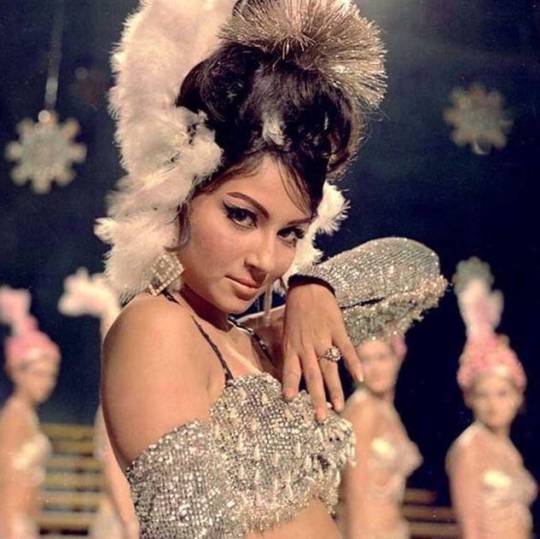
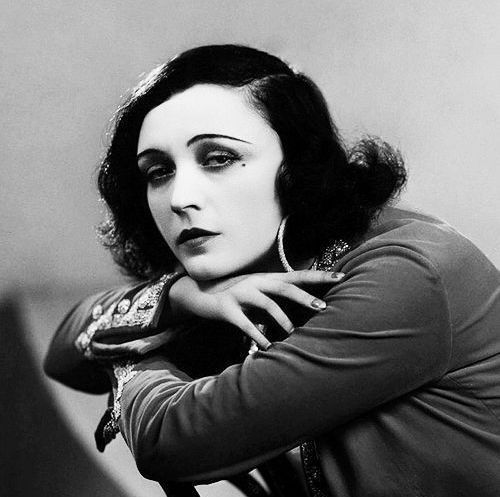
Propaganda
Sharmila Tagore (Apur Sansar, Kashmir ki Kali, An Evening in Paris)—She was adorable, an actual princess (through marriage), the first woman to wear a bikini in a Hindi film, and had, I would argue, the most iconic beehive hair in film history.
Pola Negri (The Wildcat, Men, A Woman Commands)—Legally obliged to submit her as she's from Poland, but also it is one of the greatest stars of silent film, both in Hollywood and Europe, so she has to be here. The og femme fatale and a fenomenal dramatic actress. And just so hot in this 1920s vamp style. Obviously her career slowed down in America with the introduction of sound movies, because of her accent and low voice. I'd say her voice is so much hotter thanks to that, but I'm just a simple simp. But then she made movies in Germany, and after the war she was even offered Gloria Swanson's role in "Sunset Boulevard'' but she declined. She was probably bisexual as after romances with Charlie Chaplin and Rudolf Valentino in the 20s, since the 1940s she lived with her 'female friend'.
This is round 3 of the tournament. All other polls in this bracket can be found here. Please reblog with further support of your beloved hot sexy vintage woman.
[additional propaganda submitted under the cut.]
Sharmila Tagore propaganda:

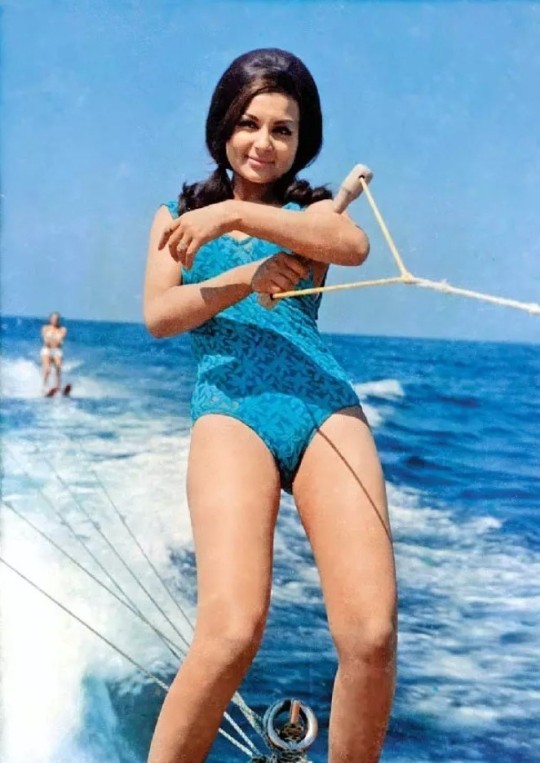
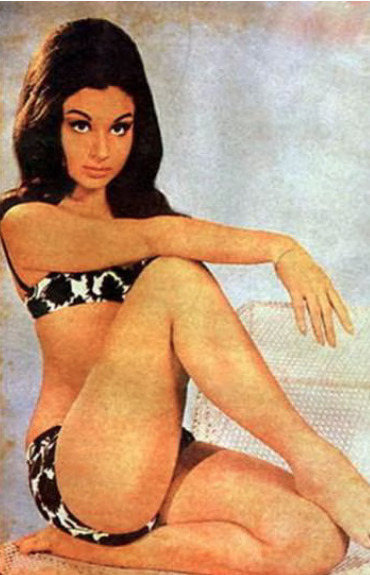

"One of the most well-known Bollywood actresses of all time!"
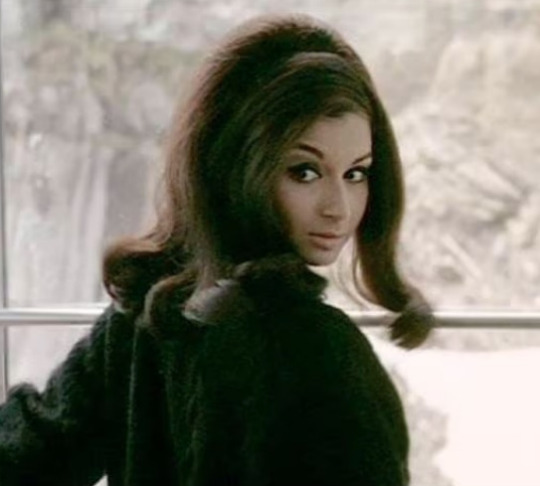
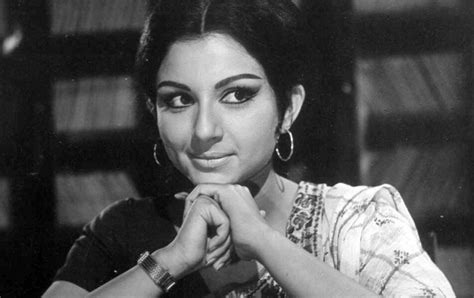
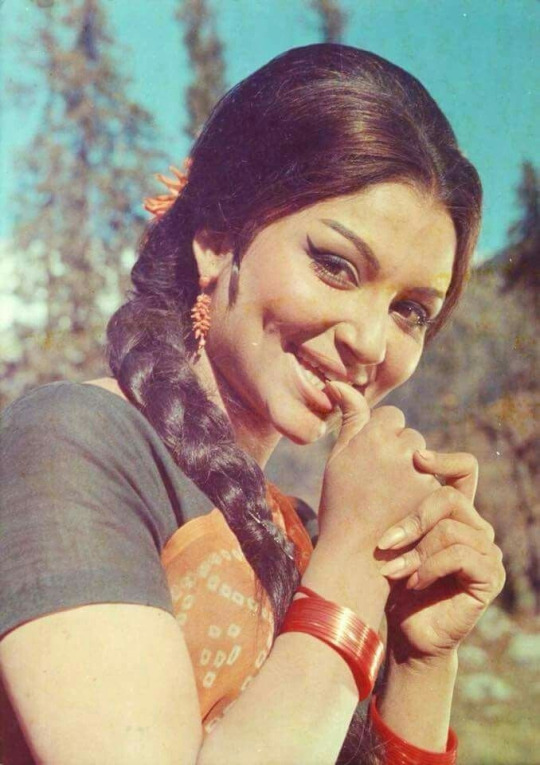
Pola Negri:
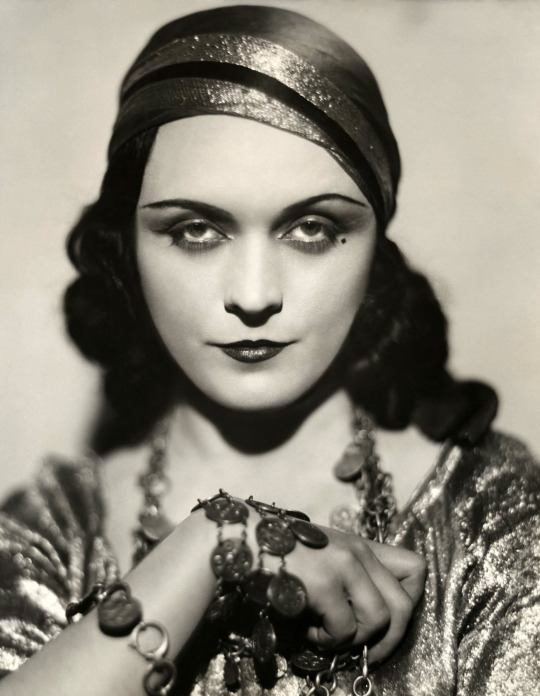
A tempestuous green-eyed vamp of the silent screen, she tantalized with both her onscreen and offscreen romances. Rocked a Polish accent - well, once there was sound! A true proficient at promoting herself and using all possible tools to do so - from a dead Rudolf Valentino to a cheetah named Teddy, the latter of which she brought to a press conference.

First European actress to be contracted by Hollywood! She survived poverty and illness to become The Queen of Tragedy, she divorced a count to date stars like Charlie Chaplin and Rudolph Valentino, then spent the rest of her life living with Margaret West in what could have been a romantic relationship.
I don't have much to say about her actual career, personal life, etc. but I just need everyone to see how hauntingly beautiful her face is. I haven't been able to stop thinking about her since the first time I saw her LOL like its pretty clear why she was such a star
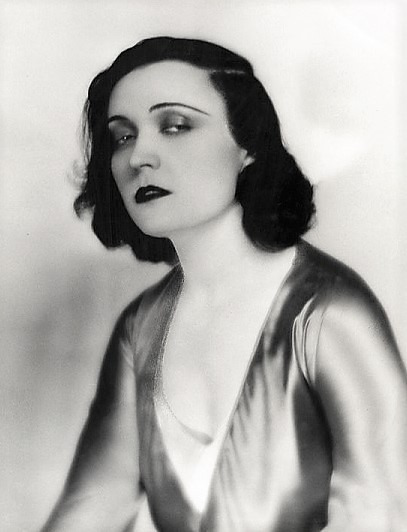
250 notes
·
View notes
Text
You might ask yourself: what sport, exactly, are sports cars playing? It's a valid question, and one that academics have brought up from time to time, before being punished for their heresy by being torn apart by gangs of feral Chevrolets as they slept. Coincidence? Well, you asked the question, so let me know how it all turns out for you as you go to bed tonight.
When cars were first invented, around the year 1886, they weren't very good at any sports. In fact, the twin Olympic events of "running over pedestrians" and "scaring horses" were still over a hundred years from being invented. Polo was right out. So these were just cars. Normal, boring ones. Things picked up a little (ha ha) when the first trucks were invented, but again the etymology has escaped these early pioneers.
Around the year 1920, a guy named Rudolf Sports invented what we now know as the modern-day sports car. He got really excited after watching a Steve McQueen movie one night in his garage and decided to cut all the parts off of his gently-dinged Model T that didn't contribute to going fast. Then, he went fast. It wasn't enough: it wasn't as fast as a race car, but it was still quick enough to be thrillingly dangerous. Soon, he crashed into a field and the tires came flying out from the wreckage. Some nearby children threw the tires around, creating the sport now known as disc golf. Posthumously, both sports and the sports car were named after Herr Sports, once he was identified from dental remains.
Every time I pass a sports car in my rickety, smoking mess, I tip my hat a little to this hero of modern street racing. Sometimes the owners take this as an invitation to race, at which point they shoot past me at high speed and obliterate themselves against the nearest hard or semi-hard structure, such as a tree. I have to also give a lot of big "ups" to his cousin, Alessandro Mid-Engine, who came up with the idea of putting the motor in the back of the car, where it would be less likely to be destroyed during an enormous crash, and much easier to be pulled out and thrown into the backseat by yours truly in the scant few minutes he has available before emergency services turn up.
147 notes
·
View notes
Photo
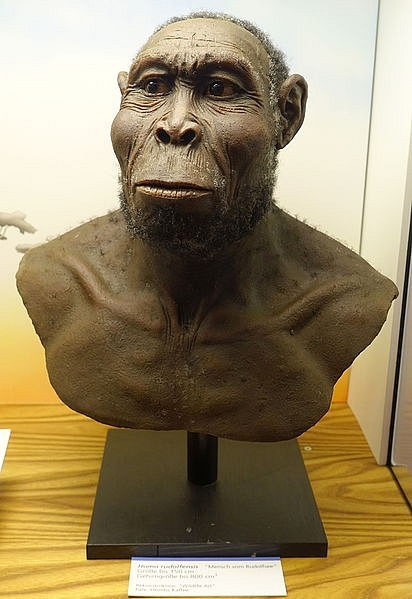
Homo Rudolfensis
Homo Rudolfensis is an early human species that lived in East Africa between c. 2.5 and 1.8 million years ago. It is known from a handful of skull, jaw and teeth fragments that remind alternatingly of Homo or of Australopithecus and that piece together to reveal a relatively large-brained, flat-faced species with robust teeth capable of chewing through tough plants.
The associated dates mean that Homo rudolfensis was around at a time that saw the emergence of our genus of Homo – a time still very much shrouded in mystery as the fossil remains are scarce, and thus, successfully building jigsaw puzzles with said remains is very difficult. This is reflected in debates that rage regarding the relationship between Homo rudolfensis and its close contemporary, Homo habilis, and the fact that some scientists favour lumping both into one species instead. It is moreover unclear whether Rudolfensis and Habilis have indeed reached their proper place within Homo, or whether they might fit better within Australopithecus instead.
Discovery
East Africa was a pivotal stage for the early years of human species, and palaeoanthropologists Louis and Mary Leakey and their sons played a central role in its discovery as such. Already in the 1950s, their efforts at Olduvai Gorge in Tanzania had uncovered early stone tools belonging to what they termed the Oldowan industry, and in the 1960s, their son Jonathan found bones and bone fragments that the Leakey team assigned to the then-new species Homo habilis, which became the earliest member of the genus of Homo known at the time.
A research project that focused its attention on northern Kenya, along the shores of Lake Turkana, would further change the picture of early Homo. Richard Leakey – Louis and Mary's son – led fieldwork there in the 1970s, and in 1972, at Koobi Fora, one of his team members, Bernard Ngeneo, discovered an interesting collection of skull fragments.
Once pieced back together, the face that greeted the team was striking: it had a steep forehead, a flat face, and a wide palate – seemingly a mixture of Homo and Australopithecus features that did not match anything else known at the time.
The skull, known scientifically as KNM-ER 1470, was initially dated to c. 2.4 million years old (later adjusted to c. 1.8 million years in 1989, and then to c. 2 million years in 2013) and assigned by Richard Leakey first to an indeterminate Homo species but then to Homo habilis. However, since the skull's features differed quite a bit from known Homo habilis specimens and its cranial capacity was larger, it sparked a whole lot of bickering and arguing in the scientific community.
Already in 1978, only two years after Leakey assigned the skull to Homo habilis, the Russian scientist Valerii Alexeev proposed giving the new skull the lead role in its own species, instead, naming it Homo rudolfensis (after Lake Turkana's old name, Lake Rudolf). However, the English version of Alexeev's paper did not appear until 1986, and, since not much data was put forth, the species name of Homo rudolfensis was not accepted by the scientific community until the early 1990s. Even so, the debate has continued, though, just like Homo habilis, rudolfensis' mixture of features does not make it a clear match with either Homo or Australopithecus.
Continue reading...
33 notes
·
View notes
Text
Rudolph / Swedish Barbecue shit
I'm Swedish. I love Trevor Lipschitz. By extension, I have to love his Swedish exchange student boyfriend, Rudolph (Will Branner's character at homecoming, for those unaware). By another extension, I was then required to make a bunch of Swedish headcanons about Rudolph. At 1 AM today, I wrote down a bunch of random headcanons about them, and now here they are!
Rudolph's full name is Rudolph Svensson.
Rudolph's already a quite uncommon name in Sweden, but it's made even rarer by the fact that it's spelled Rudolph instead of Rudolf. So, simple explanation, Rudolph is trans and he chose to spell his name like that to make it look better in English.
He's fluent in English, but has a noticeable accent. It's not so strong it's distracting and hard to decipher, but it's strong enough to provoke "where are you from?" questions.
Schools in Sweden don't have sports teams and afterschool clubs, so when Rudolph first came to Hatchetfield High, he joined like seven different clubs just because he could.
It took Rudolph a solid two weeks after meeting Trevor to realize/find out Trev has an identical twin brother. He waved and smiled at Richie in the hallways several times, thinking it was Trevor. Richie was very confused.
No one knows when Trevor and Rudolph started dating. Not even them. They were just suddenly kissing and calling each other boyfriends.
Rudolph's mother taught him how to make fucking AMAZING Swedish cinnamon rolls, so Rudolph once made them for all his Hatchetfield friends. Now Trevor thinks Swedish cinnamon rolls are far superior to American ones. Picture below so you can see the pure glory.

In Sweden, barbecues aren't as big a thing as a good ol' traditional kräftskiva is (literal translation = crawfish slice). A kräftskiva is basically just when families/friends come together and eat a bunch of crawfish. Rudolph hasn't explained what a kräftskiva is, but he keeps making "The Kräftskive Monologues" jokes that no one understands, and he keeps laughing his ass off about them.
Trevor will always introduce Rudolph as, "This is my Swedish boyfriend. I found him at IKEA."
Rudolph taught Trevor the Swedish word 'lagom', which doesn't have an English translation, but basically means that something is good enough. It's not perfect or anything, but it's not too little or too much. Now Trevor uses that word on a regular basis.
Thank you, this has been Swedish Barbecue headcanons with a Swede
#swedish barbecue is a fantastic ship name btw#whoever came up with it needs a raise#starkid#hatchetfield#hatchetverse#nerdy prudes must die#starkid npmd#npmd#trevor lipschitz#npmd trevor#trevor npmd#rudolph npmd#npmd rudolph#swedish barbecue#npmd swedish barbecue
48 notes
·
View notes
Note
My own headcanon is that Alastor was born in either 1886 or 1895, putting is age at either 46/47 or 37/38.
The theory of electromagnetism, which proposed the existence of radio waves before they were discovered, came in 1865, written by James Clerk Maxwell. But this is way too early for consideration; that would make Al 66 years old.
However, in 1886 this theory was confirmed and radio waves (also dubbed "Hertzian waves") were first discovered by Heinrich Rudolf Hertz (the guy where the Hertz unit was named after because of this discovery), he published his research throughout 1886-1888 so these precise timestamps might be slightly off.
And in 1895 the very first radio capable of long-distance wireless communication (2.4 km/1.5 mi only, but still) was constructed by Guglielmo Marconi. Of course, he doesn't deserve all the credit, as he used many models that came before that, for example the Branly detector by Édouard Branly invented in 1890.
Note: Basically all of these years and the exact dates these discoveries were made on are very ambiguous or take place over the course of multiple years. I tried to pinpoint a single date for every event but it is quite possible I messed up somewhere so please take these dates with a grain of salt.
I thought it would be fun if Alastor was born in one of those years as a nod to history, but none of these are based on anything concrete canon except for the age range of 30s-40s that we were given.
I always thought it was kinda weird for a 30-something dude to act like a parental figure to someone who was (biologically, not chronologically, I know Charlie is like 200) in her 20s, even if it wasn't genuine, so I've always thought he wasn't in his early 30s.
Sources:
"A dynamical theory of the electromagnetic field" by James Clerk Maxwell
"Electric waves; being research on the propagation of electric action with finite velocity through space" by Heinrich Rudolf Hertz (author) and Daniel Evan Jones (translator)
"Marconi's Three Transatlantic Radio Stations in Cape Breton" by Henry M. Bradford
I really need to analyse more incest because my name makes no sense now. Anyone have any ideas?
-incest anon
the sources kill me every time 😭 mla formatted ask
23 notes
·
View notes
Text
Carmen Jane Plant

Carmen Jane Plant is the daughter of Maureen and Robert Plant. She works as a professional dancer and teaches belly-dancing and ethnic dancing. She produced the 2018 show ‘The Serpent Slayer’.
Early Years and Family
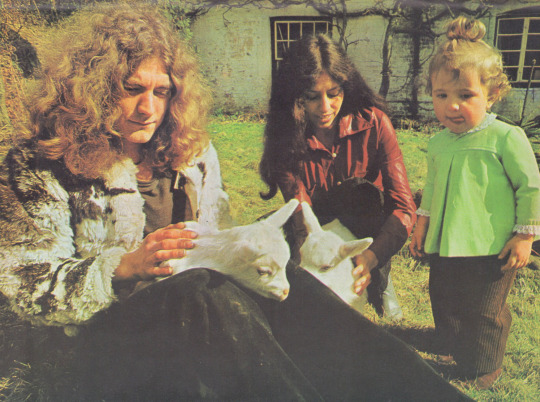
[Robert, Maureen, and little Carmen at the family's farmhouse near Kidderminster, Worcestershire, 1970]
Carmen Jane Plant is the eldest children and the only daughter of Led Zeppelin's frontman Robert Plant and his wife Maureen née Wilson. She was born on 21st October 1968 in Birmingham, England and has two younger brothers, Karac Pendra Plant and Logan Romero Plant. She has a younger half brother from her father's side, Jesse Lee Plant aka Jordan Plant.
Carmen is of Indian descent from her mother's side and of Romani descent from her father's. The 1972 Led Zeppelin song, “The Ocean,” actually references Carmen in one of the lyrics: "‘I’m singin’ all my songs to the girl who won my heart/She’s only three years old but it’s a real fine way to start".
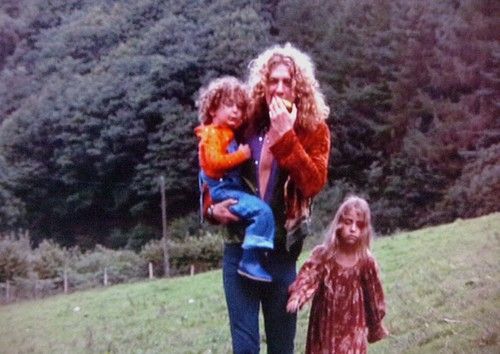
[Robert with his children Karac and Carmen at their farm, filmed in 1973 and seen in Led Zeppelin film's "The Song Remains the Same", released on 1976.]
During the 1970s, she attended the Elmfield Rudolf Steiner School in Stourbridge, West Midlands.
On October 2007 Robert admitted he regrets staying on tour throughout the 1970’s because he feels his daughter grew up without knowing who he was. Robert claimed she once mistook him for a burglar after he came home from a particularly long tour: "What I recall for the first two years is my daughter not really knowing who I was and getting rather agitated when I came back off tour, as she thought I’d come to rob the house."
In an interview for the People magazine (December 20 1976) Robert explains: "Carmen used to think she had two fathers—the one whose singing she heard through the speakers and the one on whose knee she was sitting. They [Carmen and Karac] love it when I come back to tell them tales."
Car accident and Karac's death
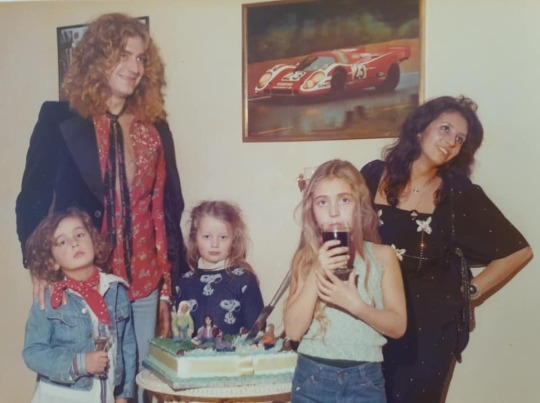
[The Plants with Scarlet Page (C) in 1976]
Carmen was also a passenger in Robert and Maureen Plant's car involved in a road accident on the Greek island of Rhodes on 4 August 1975. Maureen was driving a hired Austin Mini with her husband and their children plus Scarlet Page. The Plant family were seriously injured when the car skidded off the road and collided with a tree but Scarlet Page was unhurt. In the back-seat, Carmen suffered a broken wrist, cuts and bruises. Scarlet's mum Charlotte Martin and Maureen's sister Shirley Wilson, who were following in the car behind managed to get medical help.
In 1977, Carmen also became ill with the same stomach enteritis which took the life of her younger brother Karac Plant, aged only 6.
Personal Life

[Carmen and Robert in 1988]
On 21 November 1989, Led Zeppelin reformed with Jason Bonham on drums, for Carmen's 21st birthday party at Hen & Chickens public house in Oldbury, West Midlands. They performed 'Trampled Under Foot', 'Misty Mountain Hop', and 'Rock and Roll', with Chris Blackwell and Phil Johnstone in support. The Nashville Teens and Jimmy Page's daughter Scarlet Page, were also in attendance.

[Carmen with Charlie Jones]
Carmen Plant got married to Jimmy Page and Robert Plant's bass player Stephen Charles "Charlie" Jones (born 13 Oct 1965), at St. Peter's Church, on 18 May 1991. Their wedding reception was held in a series of marquees at Robert's farm at Kidderminster. Roy Harper's song 'Evening Star' was written for Carmen for the occasion.
Carmen and Charlie Jones have three children, their eldest a daughter named Sunny Plant-Jones (born 1993). The family lives in Bath, Somerset.
Professional Career and Recent Years

Carmen Plant Jones works as a professional dancer and teaches belly-dancing and ethnic dancing. She was tutored in belly-dancing by Serena Ramzy, wife of Hossam Ramzy who performed in Page and Plant's "No Quarter Middle Eastern orchestra". Carmen Plant has appeared at the Rivermead Womad Music Festival, Glastonbury Festival, and with the Babylon Arabic Ensemble.Carmen continues to carry on the family’s musical legacy through Middle Eastern-inspired performing arts. In a 2018 article about her dance production ‘The Serpent Slayer’, Carmen Jane Plant acknowledges her fortunate upbringing: “I come from a musical family, obviously through my dad, my husband, and my children as well. Thanks to my dad, I grew up listening to an alternative and eclectic range from a young age and that really provided the inspiration for me to get involved with all kinds of music. It’s all that I’ve known really, so it’s great that I can put this all in to practice.”
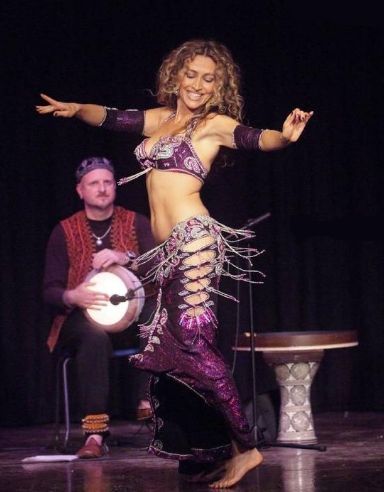
*CHECK OUR CARMEN PLANT PHOTO ALBUM HOSTED AT GOOGLE PHOTOS*
#Carmen Plant#dancer#producer#muse#Robert Plant#1960s#1970s#1970s carmen#Maureen Plant#Maureen Wilson#1980s#1980s carmen#Carmen muse#Carmen dancer#Carmen producer#1990s#1990s Carmen#2000s#2010s#2000s Carmen#2010s Carmen#bio
12 notes
·
View notes
Text
“Named” Todolf fae au. If you are new since I did the other fae au stuff, then I recommend you read the earlier drabbles in this verse on ao3.
This one is for the lovely @adridoesstuff :) after you mentioned fae au yesterday this idea has refused to leave my mind.
Cut because fae au, though strictly speaking this drabble isn’t actually all that bad.
Even after he’s fae, fully and properly, he and Tod only watch at the mingling, lying contently in each other’s arms. They enjoy each other in the privacy of their bed, sometimes before, so Rudolf can feel the deep ache as they listen to the sounds of pleasure around them as they exchange lazy kisses, and sometimes after, their lust stoked by the lust of the others as it permeates the air.
It’s one of the times when Tod has thoroughly and utterly sated them both beforehand, so much so that Rudolf is amazed that he even managed to walk in himself, that the thought first comes into Rudolf’s mind, between the moans all around them, filtering through the gossamer curtains.
Rudolf hadn’t been looking at all at the others, content to gaze up at Tod as his fingers lazily drew spirals on the king’s bare chest. Tod’s arm was around him, his thumb making gentle little soothing motions just at Rudolf’s waist.
Rudolf. His name. It was the only thing left, that had come before Tod. He didn’t remember the surface world. Tod had told him of it on occasion, and had shown him a few sketches. But Rudolf didn’t care to remember anything before the sunless sky, before Tod’s arms, before Tod. Tod is his world, his life, his everything.
The gentle fingers that stroke his cheek, that tilt his chin up to gaze at Tod’s luminous eyes are so welcome, though Rudolf can tell Tod has recognized the turmoil in his thoughts. He leans up, pressing a little kiss to Tod’s jawline.
I’m fine. We’ll talk later.
Tod presses a kiss to his brow in turn and cradles him closer, slotting their legs more properly together.
They continue to lay there, Rudolf rarely moving, just listening to the sounds around them, feeling the steady rise and fall of Tod’s chest, the beating of his heart, the warmth of his skin. He is loathed to do so but he does break the spell after a time, slipping more fully into Tod’s lap, humming at the ache in his body as he and Tod trade deeply possessive kisses. Tod’s fingers find Rudolf’s and they mesh together as Tod pulls Rudolf closer still.
They kiss again, and Tod lazily flips them so Rudolf is gazing up at him, hands arched above his head for a moment before they go to Tod’s shoulders, giving little tugs. Tod doesn’t indulge him immediately, slowly lowering himself until they are chest to chest, legs fully intertwined once more. A few more slow kisses follow before Tod shifts them once more, returning Rudolf to his earlier place, tucked into Tod’s side.
--------------
The mingling is long over by the time they stand once more in their chambers, Rudolf’s clever fingers keeping busy as he helps Tod into his sleeping garb. His own is easy enough to attend to alone, but Tod never minds the help. It’s different, in a way. Where once they were opposites - Rudolf in garb white as snow, even for sleep, and Tod in inky black - now they are mirror images, the black stark against their pale skin.
But even as Tod reclines in bed, Rudolf nuzzling close, kissing the king’s jaw once more, he speaks.
“Something troubles you.”
“Yes, Majesty.” Tod has never asked him to use his title. Never when he was small, never even at court, with the others. But Rudolf likes the way it sounds, and he thinks Tod quite likes the way it flows off his tongue.
Perhaps once Tod would have had to tip Rudolf’s chin up so their eyes would meet, but not anymore. Rudolf meets the king’s eyes with ease, feeling the king’s thumb begins to make little soothing circles by his waist, where the sleep pants and shirt meet.
“I was just thinking about what I remember, from when I was young. And the thought occurred to me - this name, Rudolf. It’s from the surface, from the human world.”
Tod’s grip adjusts a little as they settle further, but he doesn’t speak, waiting patiently as Rudolf finds the right words.
“I don’t remember anything of the surface. And I find I mislike having my name be such a constant reminder, of there. I-” Rudolf’s eyes had been shifting, not downward but away from Tod’s. He looks back at the king, who is listening intently. “I was hoping you would give me a new one.”
“Oh, my precious prince.” Tod presses a kiss to Rudolf’s brow. “It would be my honor.”
They lay together for a long moment before Tod rises, much to Rudolf’s dissatisfaction, but he goes along with the king to their little balcony, the one that overlooks the gardens. The trees and fruits are so different in the dim light. Some wilted and withered, asleep, while a select few are fully blossomed, their own sleep being something for the day.
Tod’s arm remains around him, as they take in the gardens for a long moment before the king turns to him, touching their foreheads.
“Golnar.” One of the king’s hands has moved to stroke Rudolf’s cheek as he pronounces the new name.
Rud- Golnar. It will take some getting used to, but he quite likes the name the king has chosen. Golnar is his name now. He raises himself onto his toes to kiss the king’s cheek in thanks.
“Thank you.”
#todolf#my fic#todolf fae au#I think that is the tag#technically golnar is a girl's name#in persian#it means pomegranate flower#which seemed appropriate#I also toyed with some other pomegranate names#but I think this one is best#garnet would be another possibilty#but Tod doesn't seem the type to name Rudolf after a gem#a flower seems more reasonable#and like delicious pomegranate symbolism#And now that Rudolf finally has his new name#Sisi can show up#I think sometime last week I said I was going to try and do a daily drabble thing#that seems to have gone out the window#I don't remeber what the first day's theme is#but you guys get this
2 notes
·
View notes
Text


Franz Joseph, Emperor of Austria, King of Hungary, etc. Reigned 1848-1916
Challenge: Talk about his reign without talking about wife a lot (impossible)
from anon:
Dual Monarchy. HELLO.
Constitution! (Italy immediately declared war after but ya know)
Survived assassination attempts
Doesn't lose territory to Prussian unification which is something I guess
Shares 2 names with Hayden
from @minetteskvareninova:
Franz Joseph propaganda (proper):
as much of a poor little meow meow as Joseph II.
also known as Starej Procházka (ask @archduchessofnowhere I promise it's hillarious)
wholesome friendship with Katharina Schratt
was there not for a good time, but a long time certainly, and unlike queen Victoria doesn't even get the dignity of an era named after him!!!
girldad (better not ask about his son)
loved the great god Mars, even though Mars did not love him back, wore uniform all the fucking time, but his actually military record was. well. gotta love a boyfailure.
conservative in principle, but smart enough to know when to fold 'dem (which is why the former monarchy didn't end up like Russia)
from anon:
Anti-Franz Joseph Propaganda: Yes, the sideburns are iconic, but when you are a reigning emperor for 68 years and your signature facial hair is colloquially named after a minor U.S. Civil War general instead, you fumbled the bag.
anti Franz Joseph propaganda: he was an older sibling (derogatory)
from @master-of-the-opera-house:
MARRIED HIS FIRST COUSIN WHEN THEY WERE BEGINNING TO FIGURE OUT THIS HABSBURG INCEST SHIT DON'T WORK
EVEN THO THE POPE SAID NO
Sissi was a babe tho i get him BUT THEN
THEN HE GAVE HER AN STD AND TOOK A MISTRESS
Didn't drink his respect cousin-wife juice apparently
CAUSED CROWN PRINCE RUDOLF TO COMMIT
CLASSIST PIECE OF SHIT didn't allow franz ferdinand to marry sophie chotek
And then literally said "thank God" when he died
Somehow still had the people's support as a poor old man who lost everyone close to him when he either indirectly caused that or just didn't give a shit
a Leo ♌🤢
They wasted such a pretty face and such a snatched waist on such a cunt
Had he stayed alive any longer and he would've been at the negotiating table at the hall of mirrors in 1918 *shivers*
THOROUGHLY UNFUNNY """""desk bound monarch"""""" stringent for protocol """last of the old school monarchs"""" and didn't even cause any nonsense catastrophes that usually accompanies this stick up the arse
68 long monotonous years on the throne then couldn't even make 69 for the joke
Fredrick III, Holy Roman Emperor, reigned 1452-1493
Kicked off the whole tradition of being Holy Roman Emperors
#best habsburg bracket#house of habsburg#franz joseph i#i did promise twink franz joseph in the first round
61 notes
·
View notes
Text
October's list of books to read in 2025
Nietzsche - Zarathustra, Beyond Good and Evil, Genealogy of Morals, The Gay Science: I've read large portions of all of these several times but never grappled with the whole. i have Kaufmann's Nietzsche monograph to reference alongside his translations, which seems accessible and not too horribly out of date or superseded by current scholarship. Plenty of other secondary literature but it's mostly outlines/study guides.
Murasaki Shibiku - Tale of Genji: guilty pleasure reading, my inclinations towards aristocratic poetic drama arent really philosophical so much as aesthetic. picture me with my pinky in the air sipping a cup of tea. I've got the translation by Royall Tyler and a set of essays he wrote on the work for secondary literature.
Anonymous - Tale of the Heike: The legendary account of the fall of the Taira clan at the end of the Heian period. More literature than history. to make a crass inexact analogy, this is basically the Homer of medieval Japanese literature; I'll need to read this to have a hope of understanding much of what came after it that i also want to read. Don't have a great idea what I want to consult for secondary literature yet, sadly there's much less in English on Heike than Genji.
Zuo Commentary on the Spring and Autumn Annals: the earliest chinese history narrative thats been fully englished, this is not really a commentary so much as a tale that covers a similar time period. confucianesque fall from grace of the zhou dynasty. Essentially an entry point to multiple categories of classical Chinese literature, i.e. polemical speeches and treatises written for political purposes from the same time period, of which many survive independent of this work.
Wang Bi - Commentary on the Laozi: the three volume edition by Rudolf Wagner with commentary. follow up to my reading of guo xiang's commentary on zhuangzi, which i intend to circle back to at some point with more context since i really didn't get much out of of the commentary from reading that work last year. i'll probably tackle the i ching commentary and ji kang and ruan ji's essays at some point as well to round off my Xuanxue repertoire before returning to guo xiang, probably not any of that in 2025 though.
Plutarch - Moralia: actually just the name for all of plutarch's preserved writings that arent the lives, only about half of which are on "moral" subjects. im probably not going to read all of these closely, but there's really not any reason i couldnt at least skim them; most of the longer and more challenging ones are the ones i find more interesting. i'm skipping the unambiguous pseudepigrapha like "is fire or water more usefil" though. probably not necessary to read much secondary literature, which only exists for a few of the works anyway. the loebs are all in public domain so i can at least reference the Greek easily when the english is badly mangled
Plato - Laws: this is the only one of the "late" Platonic dialogues that i cant say ive read to my own satisfaction yet. its also the longest and most difficult. scholarly opinion is divided on whether it's a culmination of everything that came before it or a pseudoplatonic work that doesn't contain any real "philosophy" at all. I'm more inclined towards the former opinion from what ive read of it so far, but we will see. i intend to supplement this with Glenn Morrow's Plato's Cretan City which gives a significant amount of background on historical context of ancient greek law.
#admittedly this is somewhat ambitious considering that im a computer science grad student#who presumably also wants to graduate and find gainful employment in the coming year#but hey. details#lore
8 notes
·
View notes
Text


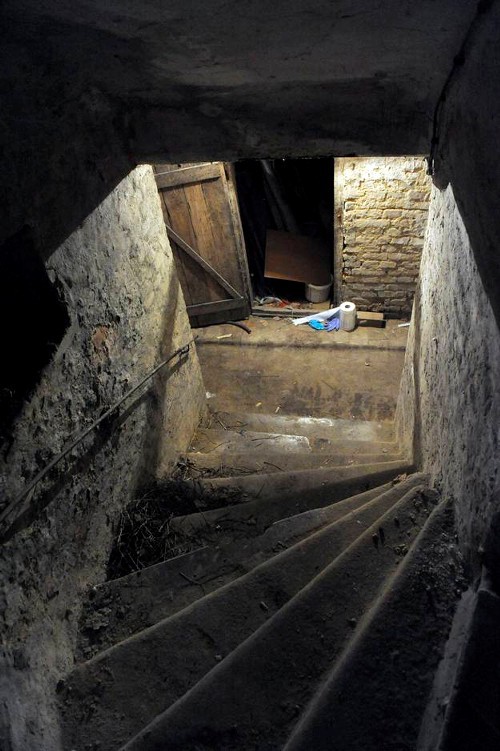
The "Ice Cream Killer"
Pictured above is a woman named Goidsargi Estibaliz "Esti" Carranza Zabala, who was arrested in June 2011 for the brutal murders of her ex-husband and boyfriend.
The bodies of Holger Holz (ex-husband) and Manfred Hinterberger (boyfriend) were discovered by workers carrying out maintenance in the ice cream parlour where Carranza worked in Austria, Vienna. Both men had been shot in the back of the head, dismembered with a chainsaw, frozen for a short time and then concealed in blocks of concrete and hidden in the cellar of the store.
Although the victims had been killed and disposed of in very similar circumstances, the murders were carried out two years apart. Carranza, who was 33 years old at the time of her arrest, confessed to killing her husband in 2008 because he refused to move out following their divorce, and said he was violent, lazy and a bully. She shot him in the back of the head three times while he sat at his computer.
In 2010, Carranza's new boyfriend met the same fate after the pair got into a drunken argument. She suspected he was cheating on her, for which she had no evidence, and to end the argument he turned to face away from her in bed and went to sleep. Enraged, Carranza took out the same gun she had used to kill her ex-husband and shot him in the back of the head.
After finding out the remains had been discovered, Carranza fled to Italy but was quickly captured and extradited back to Austria. During the trial, a PowerPoint presentation showed photographs of the victims' sawn-off heads and other severed limbs, prompting the chief prosecutor to describe Carranza as a "highly dangerous woman" whose actions were "depraved and horrific".
In November 2012, Carranza was sentenced to life in a psychiatric institution. Her lawyer Rudolf Mayer - who also defended Josef Fritzl - said at the time he would appeal to have the verdict overturned.
At the time of her arrest, Carranza was two months pregnant to another man, whom she later went on to marry while incarcerated. After the birth, her baby boy was taken away to be raised by Carranza's parents in Barcelona, and Carranza sought to apply for a transfer to Spain so she could remain in contact with her son.
You can also read this post here.
#murder#female killers#dismemberment#relationships#mental health#psychology#medium#blogger#long post
33 notes
·
View notes
Text
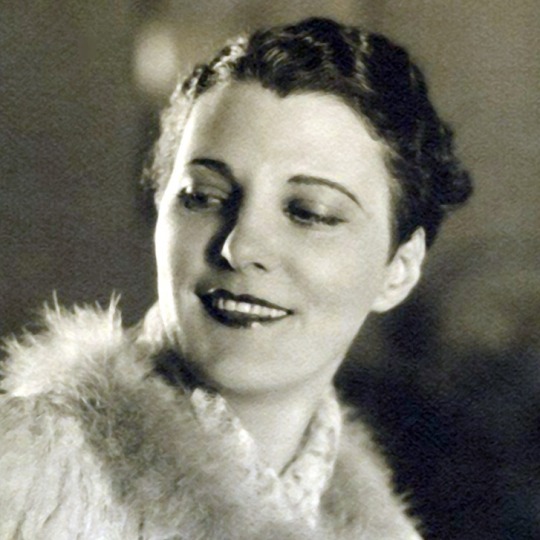
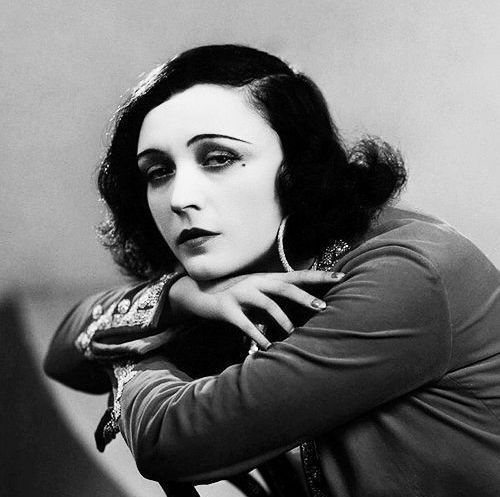
Propaganda
Leatrice Joy (You Can't Fool Your Wife)—she's got this boyish air about her. a slight manner of the twink shall we say. a genderbent je ne sais quoi. enjoy these photos of her in king mode and the ones with silly hats [photos below the cut]
Pola Negri (The Wildcat, Men, A Woman Commands)—Legally obliged to submit her as she's from Poland, but also it is one of the greatest stars of silent film, both in Hollywood and Europe, so she has to be here. The og femme fatale and a fenomenal dramatic actress. And just so hot in this 1920s vamp style. Obviously her career slowed down in America with the introduction of sound movies, because of her accent and low voice. I'd say her voice is so much hotter thanks to that, but I'm just a simple simp. But then she made movies in Germany, and after the war she was even offered Gloria Swanson's role in "Sunset Boulevard'' but she declined. She was probably bisexual as after romances with Charlie Chaplin and Rudolf Valentino in the 20s, since the 1940s she lived with her 'female friend'.
This is round 2 of the tournament. All other polls in this bracket can be found here. Please reblog with further support of your beloved hot sexy vintage woman. (remember that our poll era starts in 1910, so please don't use propaganda from before that date.)
[additional propaganda submitted under the cut.]
Leatrice Joy:
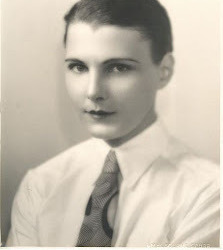
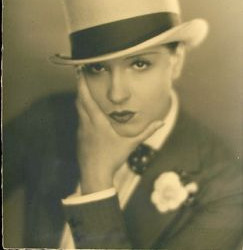
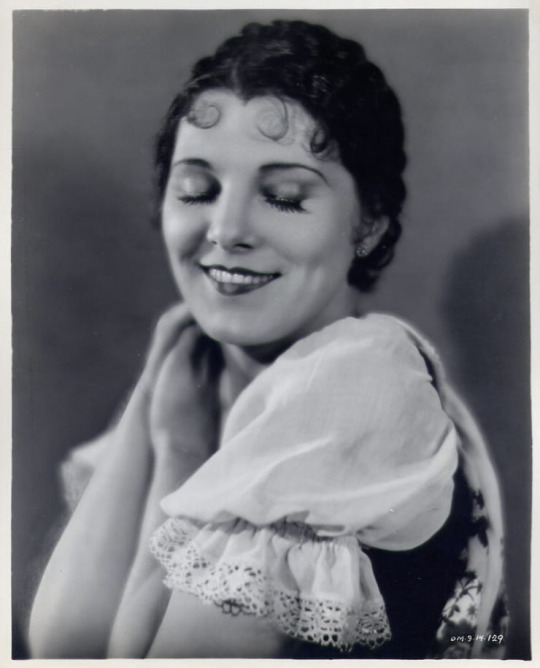

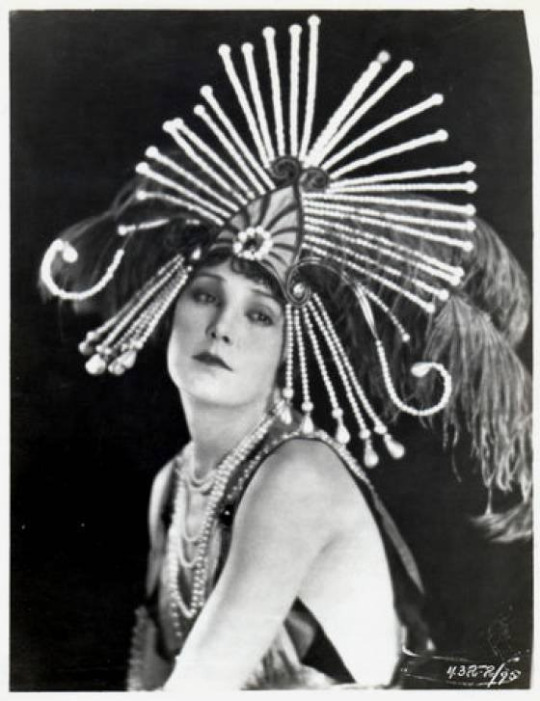
Pola Negri:

A tempestuous green-eyed vamp of the silent screen, she tantalized with both her onscreen and offscreen romances. Rocked a Polish accent - well, once there was sound! A true proficient at promoting herself and using all possible tools to do so - from a dead Rudolf Valentino to a cheetah named Teddy, the latter of which she brought to a press conference.

First European actress to be contracted by Hollywood! She survived poverty and illness to become The Queen of Tragedy, she divorced a count to date stars like Charlie Chaplin and Rudolph Valentino, then spent the rest of her life living with Margaret West in what could have been a romantic relationship.
I don't have much to say about her actual career, personal life, etc. but I just need everyone to see how hauntingly beautiful her face is. I haven't been able to stop thinking about her since the first time I saw her LOL like its pretty clear why she was such a star
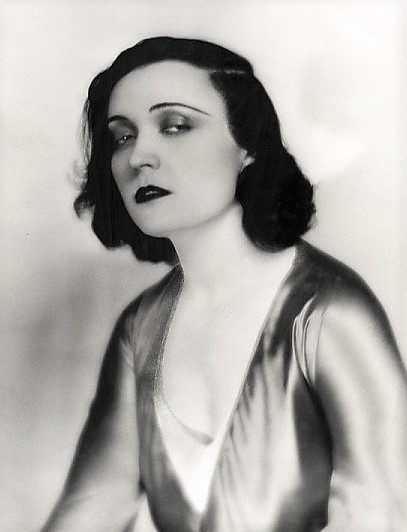
103 notes
·
View notes
Text
FE2 Novelization Translation - Book 2 Chapter 2 Part 1
If you would like to start from the beginning, read a missed part, etc., click here!
FE Game Script Translations - FE Novel Translations - Original FE Support Conversations
If you are interested in donating to support my work, please check out my Ko-fi here. Thank you!
———————————
Chapter 2: Battle at the Border
Part 1: Luthier’s Tragic Tale
After the Rigel Army captured Zofia’s base at the border, the Newly Reborn Knights of Zofia saw that they showed no signs of intent to invade further. This finally proved the village elder’s analysis of the situation correct. Rigel’s target was indeed the sluice. They were trying to hijack it to sink Zofia.
Judging by what he knew about the border, the village elder concluded that the gorge, into which the spring, river, and rain water from both Rigel and Zofia gathered, would fill up enough to submerge Zofia within three days at most. If so, the Knights had to retake the base as quickly as they could. But out of all the reasons making it difficult to do so, one major problem in particular stuck out for them.
The Rigelian Army had deployed a Witch unit. This meant that the Duma Faithful had joined forces with them, who were not supposed to make any movements when a war was not for a religious cause. It was also proof that the entire country was fully mobilizing against the Knights. That alone was a huge threat to them, and to make matters even worse, without a Mage after Cliff’s passing, they were faced with the reality that they were unable to build a Mage army able to match the Rigelian Witches. Rigel was very likely targeting that weakness specifically, and Alm was once again impressed by Emperor Rudolf’s flawless tactics.
Alm tasked siblings Clive and Clair with leaving the border village to gather reconnaissance around the border. Though what they saw provided the Knights with eye-witness proof that all of their suspicions about the current situation were correct, none of the intel they gathered did anything to reassure them. Clive, as a Paladin who rode a sacred horse that galloped across the continent, hid in the shadow of a large boulder. And Clair, as a Falcon Knight who rode a falcon that flew through the skies, hid in the branches atop a giant tree. Both had a clear view of everything happening at the sluice.
The sluice was as big as five castle gates lined up next to each other, and the mechanism that controlled the amount of water flowing into the irrigation channels was impossible for a human to move by their own strength alone. Those who built it in ancient times were very wise, and knew it best for the water itself to control the mechanism, as the amount in the gorge increased and decreased.
Currently, the Witches, having broken through the border gate, were swarming the sluice like ants, casting their long-distance spells as hard as they could to halt the control mechanism, waiting until the moment the gorge overflowed with water. When the black, poisoned water finally submerged the stone bridge’s girders and reached the railing, they would know it was their chance to release the control mechanism in unison, and flood Zofia.
”That's Tatarrah!” Clive pointed out in the distance and said to his sister, who was gliding down from the treetop to land next to him.
Clair did not recognize the name, but guessed that he was the tall Arcanist leading and standing in the middle of a group of other Archanists wearing robes the color of darkness, who were all sitting down and emanating dark magic.
“Tatarrah is known as the wolf of the Duma Faithful. He’s not powerful, but is known instead for his cruelty.”
“Who is the girl next to him?” Clair saw a small figure suddenly appear from within Tatarrah’s giant shadow.
It was the fragile, tiny figure of a teenage girl. Her brown hair was pulled back into a ponytail.
“Most likely a Witch of the Duma Faithful. Let’s go!” Clive said and took his horse’s reins, turning him around. They had to hurry back to the village and tell Alm what was happening. Judging by the amount of water in the gorge, Rigel would likely be able to execute their wicked plot tomorrow night. The Knights must act before then.
Clair was still focused on the girl next to Tatarrah, so she was a bit late to order her falcon to fold up her wings and follow after Clive. But even after her falcon started to move, she still seemed to be thinking about something, as she kept turning back to look at the sluice.
‘Her uniform is that of a Mage serving the Mila Faithful. I’m sure of it.’ That was the exact thought she had on her mind.
-
Now that Rigel had captured Zofia’s base at the border, it was far more likely than not that several of their army’s units had invaded Zofian territory and started setting up camps. There was no sign that they were building any camps along the main road, but they might be hiding in several small groups, camouflaging themselves within the lush shrubs and trees growing upon the fertile lands near the border, waiting to sneak attack once the poisoned water was released and began to flood Zofia.
That was the reason why Clive and Clair kept a sharp lookout of their surroundings, even as their sacred beasts galloped as quickly as they could. If any groups of Rigelian soldiers were hiding in Zofian territory, no matter how few, the time needed to defeat them might directly affect whether or not the Knights could capture the sluice in time. And so, their general and the newly crowned king of Zofia, Alm, ordered the siblings again to gather more reconnaissance detailing the Rigel Army’s station around the border.
As they traveled, they found bushes just off the main road that had been trampled by human feet, and followed them to enter a forest, where they heard a sudden commotion from within. It made them nervous, thinking that they’d finally found signs of a unit of Rigelian soldiers.
If they were able to hide in the forest, then this group of enemy soldiers couldn’t be that powerful. As a Paladin and a Falcon Knight, Clive and Clair decided that the two of them alone should be able to take them on. Guiding their mounts towards the Rigelian soldiers, already prepared for a fight, they galloped through the trees.
When they saw the eerie clawed wings of several gargoyles hanging from the tree branches, they realized that this Rigelian unit was one that cast dark magic. Or so they thought at first. What was so strange about this scene was despite the fact that summoning spells were a unique magic that only Cantors could cast, their robes the color of darkness were nowhere to be seen among the roots of the nearby trees. And judging by the gargoyles’ movements, they lacked any kind of leadership, seeming to have lost their Cantor, who would normally command them.
“Outcasts.” Clive said, and brought his horse to a halt, with Clair following his lead.
Occasionally, monsters summoned to serve a Cantor are unable to return to their original dimension, even when they otherwise should have, such as upon the death of their Cantor. Normally, these monsters would vanish, never to return. But in some rare cases, they adapt to the natural environment in this dimension. Units have come to call these monsters “Outcasts.” In order to survive, many Outcast monsters form large herds and become incredibly violent.
Now that the siblings knew that what they had found were not Rigelian soldiers, they started to leave immediately, but the gargoyles hanging in the trees all gathered in the direction they wanted to go in, making it impossible to escape. Still trying to find what had been making the commotion they heard, they climbed off their mounts and continued deeper into the trees, where they saw a lone young Mage, fighting against a pack of gargoyles all on his own.
“Is he a Mage?” Clair asked.
Clive put down his lance, unsheathed the sword in the scabbard on his belt, and answered, “Mages cannot cast summoning spells. Let’s go, Clair! That many gargoyles is too much for just one Mage!”
They watched as he cast a Thunder spell. In the free moment created after the bolt of lightning scattered the gargoyles, Clive and Clair ran up to him and stood behind his cape. As Clair fought one of the gargoyles next to her, the Mage became aware of his unexpected reinforcements and whirled around, allowing her to get a look at his face.
He had bright eyes underneath thick eyebrows, and his white, shiny canine teeth jutted out slightly from his open mouth. He appeared to be around the same age as Clive.
“Who are you?!” The Mage asked.
Clive offered to help, but the next spell that he cast was about to utterly amaze them.
“I don’t need any help. Get out of here!” The Mage said, then drew a magic sigil across his chest that neither Clair nor Clive had ever seen before.
“Wind! Sweep away my enemies!”
A terrifying wind swept through the forest. As they were standing right next to the Mage causing it, they felt as if it was also blowing from within their own bodies, and they had to wrap their arms around themselves to keep from being torn to pieces.
This spell was the highest level of offensive magic that a mid-level Mage could cast, Excalibur. To make up for a Mage’s lack of defenses, from a distance, this spell possessed an attack power roughly equivalent to that of ten lances or one hundred arrows.
The group of gargoyles was ripped to pieces in an instant, making the siblings almost feel sorry for them. Now that Clive had seen up close that this Mage had mastered Excalibur, there was only one thought on his mind. They must recruit him into the Knights. Clive was determined to do so. With power like his on their side, they could cross the border, and Tarratah’s army gathered around the sluice would be no match for them.
It took some time for all of the gargoyles’ scattered remains to fall to the ground, but when the forest became quiet, the Mage did not even take one look at the siblings, running straight towards the bushes. He pushed past them to reveal that a young girl was there, covered from head to toe in leaves and twigs, but unharmed.
The Mage had challenged that entire group of gargoyles all on his own, just to save the girl.
-
When Clive said that he was going to the border village, the Mage said that was also where he was going. Clive was ecstatic at this stroke of good fortune.
“Please take care of the girl for me.” The Mage said, picked up the girl he’d saved from the gargoyles, and put her on Clair’s falcon.
“You can ride, too.” Clive offered.
But the Mage rejected his request. “I’ll walk. Don’t worry. I won’t slow you down.”
The Mage said that his name was Luthier. No matter what Clive and Clair did, they could not get him to open his heart, but as they walked the road to the village, once he knew that they were siblings, he seemed to soften up to them a little bit.
“You have an older brother to be very proud of.” Luthier said.
His words made Clair’s face turn bright red. “He’s even about to transcend to Gold Knight. We’re just waiting until we can perform the ceremony.”
“And I have a younger sister to be just as proud of.” Clive said. The fact that he thought of his blushing sister’s pride before his own was proof of just how precious she was to him. “Clair just recently transcended to Falcon Knight. Her potential might be even greater than mine.”
“You two seem very happy.” The Mage said with a laugh, but his bright eyes suddenly darkened a moment later.
Clair was the only one to notice.
Clive asked, “Do you have any family?”
“I have one little sister.”
“And she must be skilled in magic as well?”
“She has the greatest talent for it I have ever seen.”
Clive proceeded to persistently ask questions about Luthier’s sister. If there was a chance that she could also join the Knights of Zofia, then he would want nothing more than for her to further bolster their Mage army. But once the topic of conversation changed to his sister, Luthier once again became quiet.
Clive finally changed the subject, asking outright if Luthier wished to join the Knights.
However, contrary to the answer Clive was certain to receive, Luthier did not nod his head.
“Why not? You are also a Mage of Zofia. You are passionate about protecting Zofia, and it should also be your duty.”
“Of course I am.” Luthier said. “I believe that I was gifted with magic to fight for Zofia. However, I cannot join the Knights of Zofia, because there is a traitor in my family. To be honest, I am jealous of you two.” He looked down at his feet. “Even during this time of war, you have a strong bond as siblings. War is undeniably tragic, but those who bond through experiencing the same sadness are happy together.”
Though he was hanging his head, his bangs were pulled out of his face, so they could see his grief was written all over his face as he fought to hold back his tears. “My sister is a Witch who fights for Rigel. Her name is Delthea, and she betrayed Zofia to side with Rigel.”
The girl he saved was sleeping peacefully on Clair’s falcon. He ran a hand through her hair. “This girl was kidnapped by the gargoyles when she went out to pick wild strawberries. I saved her because it is the least I can do for the villagers to atone for my sister’s betrayal. And because I couldn’t bear to see anything happen to anyone like her.”
His throat became choked up for a moment before he added his last words, “I love my sister. I love her so much I can hardly stand it.”
-
The girl Luthier saved was the daughter of the local village’s blacksmith. He cried tears of joy as he took Luthier’s hand and thanked him over and over and over again.
The scene made both Clive and Clair unable to believe that this Mage's sister could betray this village, nor Zofia.
Seeing the girl home safe, the other villagers also approached Luthier gradually in small groups, and all thanked him just as profusely as the blacksmith did. They appeared to trust him so deeply that the siblings couldn’t possibly imagine that any of them thought of him as a traitor.
“The least I can do is give you this as an apology for not being able to join you.” Luthier said, and handed the Blessed Lance to Clair, which the blacksmith had insisted he have.
It was imbued with the healing spell Recover. Even if the person holding it could not wield lances, just keeping it on their person would grant them protection by instantly healing their minor wounds. Until they transcended to Sage, Mages could not learn to cast Recover, plus Luthier did not have any allies to heal him, so it would have been a huge help to him.
Clair started to turn down his offer, but Clive stopped her and told her that she should take it, at least for now. He was not going to give up on recruiting Luthier, and planned to try to persuade him again later on.
Luthier lived alone in a hermitage built outside both this village and the border village. Even he should have known that the Newly Reborn Knights of Zofia were stationed nearby, but he must not have introduced himself earlier because of the weight his sister’s betrayal put on his mind.
The decisive battle with Rigel was most likely to start tomorrow night. After Clive reported to Alm about the current situation at the border, he told him about Luthier. Once they knew that Luthier had mastered Excalibur, that made Alm and everyone else present want him to join their ranks even more.
That night, Clive took Alm with him to visit Luthier’s hermitage, but to no avail. Luthier would not budge. Clive finally gave in, returned the Blessed Lance as he wished Luthier that the fortunes of war would be with him, and left the hermitage.
-
Come morning, the thrushes did not chirp a single tune, perhaps because even they realized just how cruel Rigel’s twisted plot for that night was.
The Knights of Zofia all got plenty of sleep in preparation for the day’s decisive battle, and were now each completing the final cleanings and adjustments to their weapons. Without a Mage army, they had to make do with the Units they did have. Alm hinged their entire strategy on their two Snipers, Python and Tobin.
In the end, Luthier outright rejected the offer to join the Knights. Clair wondered how he really felt about their upcoming battle, deep down in the depths of his heart. Was he thinking that the Knights were about to deploy, and might have to take his younger sister’s life? Or was he perhaps thinking that if he joined the Knights, they could rescue her from Rigel, giving him a chance to help her have a change of heart? Were those the options he was lost between now, wondering which was right? Such were the thoughts on Clair’s mind as she brought him breakfast to his hermitage, worried about him and the helplessness of the situation he was in.
Once she was right outside the building, she said good morning, but he did not respond back, and she soon knew exactly why. The door wasn’t locked, so she opened it, and realized that he was already gone.
Her heart sank when she saw the Blessed Lance leaning against one of the thin walls inside.
He had torn off a piece of the cloth wrapped around the lance, and written her a simple message on top of it with small lumps of charcoal.
‘To the sister, the Falcon Knight’
She felt she couldn’t move quickly enough as she placed the breakfast tray on the floor, took back the lance, and ran to the village. She had to tell Clive. She had to tell her brother.
Clair screamed to herself, ‘Luthier went all by himself, and I know exactly where to. He went to Rigel to fight his sister. And he left the Blessed Lance behind. He’s fully prepared to die. He’s going to fight to the death with his very own sister!’
The blacksmith knew exactly why she was so upset and rushing out of Luthier’s hermitage, her face as white as a ghost. He jumped in front of her, blocking her path forward.
“Please let him go.” He said as he held on tightly to Clair’s arm. “He went to settle everything once and for all. Lady Delthea is currently Tatarrah’s right-hand servant. He left early this morning because he knew that was when Tatarrah would be at the sluice.”
‘That girl! That girl with the brown ponytail is Delthea!’ Clair remembered the tiny girl hiding in Tatarrah’s giant shadow.
“I don’t know why Lady Delthea chose to serve him. The villagers all think she’s probably gotten too full of herself. She is an exceptionally skilled Mage. Even at her young age, she has already mastered Aura.”
Aura. Just hearing the word sent a chill down Clair’s spine. Aura was a legendary attack spell. In the last ten years, she’d only ever heard of one other person who could cast it. Even Luthier's Excalibur spell was nothing compared to it.
“Lord Luthier is prepared to die. At best, they take each other out. If not, at the very least, he will give your army a chance to study what kind of spell Aura is. We all deeply respect him. And it is out of that respect for him that we did not stop him. Our sadness cannot possibly compare to his. Please do not try to stop him, either.” The blacksmith begged her.
“No!” Clair shouted. She shook his grip around her arm, and put her fingers in her mouth to whistle, calling her falcon to immediately descend to her side.
“Tell everyone that I am going to the sluice right now.” She said to the blacksmith, and used the Blessed Lance to support her as she jumped up onto and straddled her falcon’s back.
“He cannot fight Delthea.” That was how she felt when she kicked her falcon’s side and took off into the sky.
As the village grew smaller and more distant, all of the color drained from her face, and she shouted as loudly as she could, “Because he is her brother! Just like Clive is mine!!”
#fire emblem#fe#fire emblem 2#fe2#gaiden#fe gaiden#fire emblem gaiden#fe15#fire emblem 15#shadows of valentia#fire emblem echoes#alm#celica#japan#japanese#translation#novel#light novel#fe2 novelization translation
6 notes
·
View notes
Text
Saizo / サイゾウ, Xaizor / サイゾー, and Asugi / グレイ
Saizo (JP: サイゾウ; rōmaji: saizou) is the fiery ninja that serves as a retainer to Hoshido's crown prince Ryoma in Fire Emblem Fates. This name is in reference to the fictitious ninja Kirigakure Saizō (JP: 霧隠才蔵). He belonged to a group of ninja known as the Sanada Ten Braves, who served the samurai warlord Sanada Yukimura during the Sengoku period. According to the tales, the Ten Braves participated in the Seige of Osaka, a year-long conflict in which Sanada, loyal to the Toyotomi clan, lost the defensive war of attrition. Of the ten, only Kirigakure Saizō and Sarutobi Sasuke really stuck in pop culture.
This choice of name for the Fire Emblem character is based not only on him being a skilled shinobi, but his fierce loyalty to Ryoma—also named after a renown Sengoku period samurai. Given the importance of the fall of Osaka, with the Tokugawa Shogunate becoming Japan's militant government system for the next two hundred years, the fall of Ryoma and Shirasagi Castle in the Conquest story route could be influenced by the Seige of Osaka. The death of Saizo's father may also pull from stories that claim that Kirigakure was the son of Azai Nagamasa, brother-in-law to the infamous warlord Oda Nobunaga—the very man who had killed Azai.
Xaizor is a dread fighter of Rigel that is fought in a skirmish at the foot of Fear Mountain in Fire Emblem Gaiden and its remake Fire Emblem Echoes: Shadows of Valentia. Though not immediately apparent, this random mook is also based upon Kirigakure Saizō. This could be surmised in the original release, with his Japanese name being サイゾー (rōmaji: saizо̄)—a less common rendering of the name in katakana—and the ninja-inspired design of the Dread Fighter class. The remake deepened this connection with additional lines in the script indicating a devotion to the noble Emperor Rudolf, rather than the cruel witch Nuibaba. One could even consider a parallel between the Seige of Osaka and the Deliverance storming Rigel, and thus, a parallel between Rudolf and Sanada Yukimura.
Asugi is the young, candy-loving shinobi and heir to the Saizo name in Fire Emblem Fates. Surprisingly enough, he shares quite a bit of intel on both his and his father's names in the game itself! Straight from the horse's mouth:
"Asugi" is a word in one of the languages they speak out there. It means "gray."
As it turns out, asugi is only a word in some languages of the Philippines, primarily Hiligaynon. In those tongues, asugi means mercury—not gray, but the silver color of the metal is gray-adjacent.
More than anything, the name Asugi was intended to be an anagram of Gaius, the character from Fire Emblem Awakening that he is practically a carbon copy of. And though the name is certainly not Japanese, when rendered in the language as アスギ, it would closely resemble アズキ (rōmaji: azuki), just with the dakuten (the two hash marks on the top right corner of ギ and ズ) changed. Azuki, more commonly referred in English as adzuki beans, are typically boiled with sugar to make red bean paste. This paste is a common ingredient in sweets in East Asia, used as a filling in Japanese dango, mochi, and other confectionaries.
In Japanese, Asugi is instead called グレイ (rōmaji: gurei). In internal files, this is romanized as Gurei, while the official artbook calls him Gray. In the original script, this is what he said about his name:
「グレイ」は、暗夜の言葉で「灰色」って意味だそうだ。
Translation: I heard that in the language of Nohr, "Gray" means "ash-colored*."
*In Japanese, the word for many colors refer to a common natural occurrence of that color. As such, the color gray literally means "ash-colored" in the language.
Much like the English localization, the name also makes reference to a familiar face. The rōmaji rendering Gurei is an anagram of Guire, the official romanization of Gaius' Japanese name. However, there is a possibility that there is a reference to another character in this name:グレイ is also the name of Gaiden's Gray. Though not indicated in the original game, the stats of the Ram villagers suggest that Gray is intended to take the Mercenary classline. This class distribution would be further pushed with the release of Shadows of Valentia two years after Fates. It's not an unreasonable possibility that Asugi and Saizo were intended to be named after the suggested choice of playable Dread Fighter in Alm's army and the only named Dread Fighter encountered by the Deliverance before the final battle.
As hinted earlier, Asugi also reveals some information about the Saizo name, at least in the world of Fates. Here's what he has to say in English:
If I understand right, [Saizo is] a Hoshidan word that means "color bringer."
In Japanese, Asugi instead says that Saizo means 彩りを造る (rōmaji: irodori wo tsukuru)—"making color." The kanji used in the phrase are alternatively read as sai and zou, making Saizo the only Hoshidan character in Fire Emblem Fates with a canonical kanji rendering of his name: 彩造.
18 notes
·
View notes